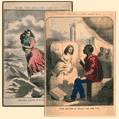

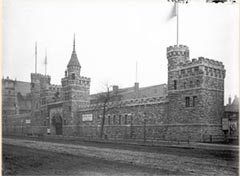
Naval motifs were important to Charles Gunther, who enlisted in the Confederate navy as a steward and purser on the steamer Rose Douglas. The ship navigated the southern tributaries of the Mississippi transporting troops, conscripts, and supplies until it was captured and burned by Union forces in Arkansas. Gunther was briefly imprisoned but soon returned to his home in Peru, Illinois. (SILVESTRO 87)
Boats on the lawn of the Libby Prison War Museum, c. 1890 (ICHi-30981)
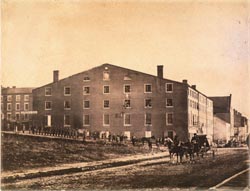
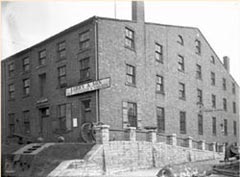
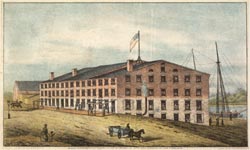

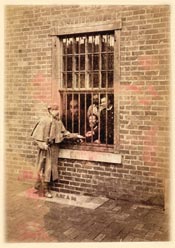
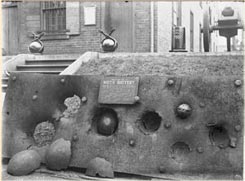

Gunther may have begun his extensive collection of Confederate war relics during his service on the Rose Douglas.
Souvenir hunters were active throughout the war -- the Chicago Tribune described how curiosity seekers gathered mementos from the dead at Shiloh, where the first massive casualties of the war littered the battlefield:
They slogged through the soggy battlefield, stepping over corpses, gathering canes marked with shot, gunflints, Bowie-knives, balls, cartridges, pelican buttons, and other souvenirs. (KARAMANSKI 94)

After traversing half a dozen streets, and running the gauntlets of jibes, jabs, and insulting remarks...we were brought to a halt in front of that far-famed bastile - the "Libby" - a prison with which we were already well acquainted by reputation. We viewed the dingy brick structure with no little curiosity and...an involuntary shudder ran through my frame...The strongly barred windows and dreary, dungeon-like aspect of the exterior made me far from comfortable and my mind was full of forebodings for the future. Our advance created quite a sensation among the inmates of "Libby" and other prison pens in the vicinity. They crowded to the windows (this privilege being at that period permitted with impunity) and greeted us with cries of "Fresh Fish!" "How are you, Yanks!" (COLVIN)
Diary of Charles Colvin (ICHi-31082) and inmates at Libby Prison (ICHi-31071).
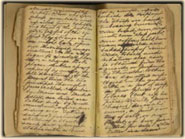
Water battery imbedded with shot that protected earthworks on the Potomac River during the war, Libby Prison War Museum, c. 1890 (ICHi-30992).
Charles Gunther served as president of the Libby Prison War Association, a consortium of Chicago businessmen that resurrected a former Richmond prisoner-of-war camp in Chicago in 1889.
Consulting with the architectural firm of Burnham and Root, the association created the Libby Prison War Museum on South Wabash Avenue between 14th and 16th Streets. A Gothic-style castellated wall surrounding the prison was a Chicago addition.

The warehouse was subsequently occupied by Luther Libby, a ship chandler and grocer, who was given forty-eight hours to vacate the premises when the Confederates appropriated it as a prison during the early years of the war.
Libby Prison Cigar Advertisement, Chicago, c. 1890 (CHi-30975); Libby & Sons warehouse, Richmond, c. 1861 (ICHi-31072).
Officers were quartered at Libby, while privates were confined at warehouses known as Crews', Pemberton's, Smith's, or Scott's. Thousands of prisoners were also held on Belle Isle, an island in the nearby James River.
Libby Prison during the Civil War (ICHi-22083).



